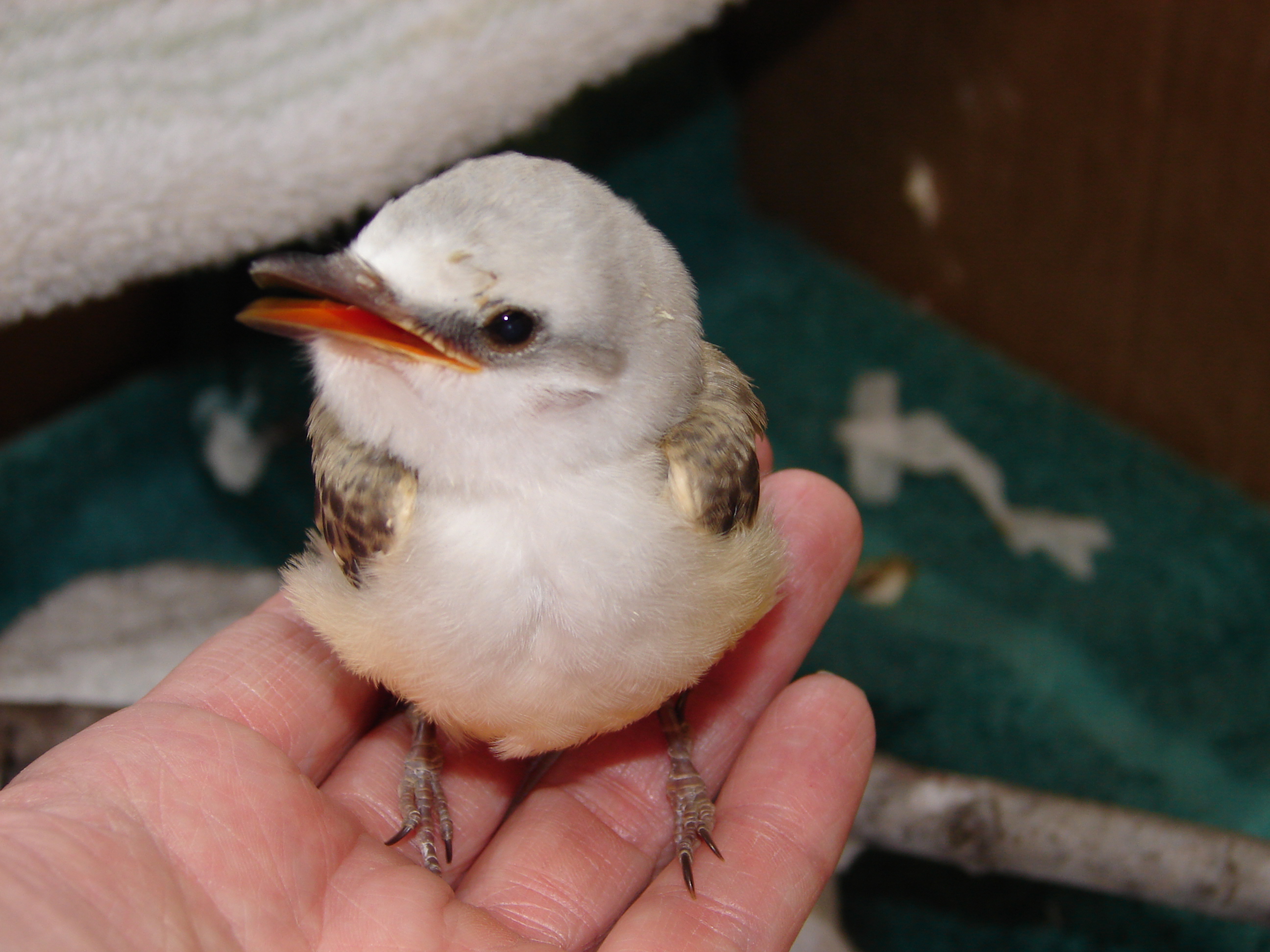Lovey Dovey
Injured adult doves and young are quite plentiful right now at the Wildlife Center. Most folks are familiar with the haunting call of the Mourning Dove and can pick it out at (under) the birdfeeder. But the Houston area is home to a total of four different species. All doves start life as “ugly ducklings” covered in dingy white down and a disproportionately large beak. Pigeons belong to the same family as the dove and are sometimes called Rock Doves. The most common dove in the greater Houston is the Mourning Dove, but the White Wing Dove is quickly becoming a fixture in our backyards. Rare until 5 -7 years ago, they were usually seen only when migrating to or from breeding grounds in Mexico and Central America. These days they are frequent year-round visitors. They look very similar to Mourning Doves, but they are much bigger and at rest, you can see the white band that outlines the leading edge of the wing. (Note the white feathers are already emerging on the nestling below) Eurasian Collared Doves can be distinguished from Mourning Doves because they have a thin black collar or necklace at the base of the neck. Inca Doves are the smaller of the species that make Houston home, in the bright sun there are some iridescent feathers, but the “tiled” appearance of the feathers is the most distinguishing characteristic. Doves make sloppy haphazard nests that often fall apart before the babies have fully fledged. Therefore, baby doves are one of the most common species seen at the Wildlife Center. Every effort should be make to encourage [...]


